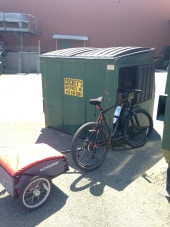









paul wheaton wrote:
Another problem is that newspaper/cardboard tends to not break down particularly fast. And since the mission is usually to smother something that is already there, it is placed in sheets. If too thick, it could make a layer that cannot be penetrated by water or air - maybe for many years.
paul wheaton wrote: Last spring I visited somebody's garden where an apple tree was doing poorly. After digging around a little, a layer of newspaper was found about an inch under the soil. It was about a quarter of an inch thick and had apparently been put down to kill weeds about five years earlier. It killed the weeds. And it was making the tree sick. And it wasn't breaking down.






Phil Stevens wrote:It's a pretty good proxy, but industrial activity not associated with dense urban areas throws it off. The best examples are the oil patches in western North Dakota. west Texas, northern Alberta and Prudhoe Bay showing the bright light from all the wellhead flaring. In terms of where you might want to locate a homestead, though, those places could have even more negatives than a big metroplex. So it's still a really useful map either way you skin it.
